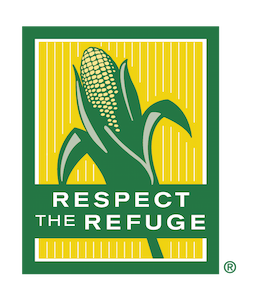3 MIN READ
Corn Silage Management
April 4, 2023
Overview
Corn silage is a popular forage for ruminant animals because it is high in energy and digestibility.1 Maximizing profitability in corn silage production requires not only high yield, but also high quality. Proper management of silage is influenced by multiple factors including corn product selection, plant population, harvest timing, the height and length of cut, and storage. An analysis of silage should be done to determine dry matter content, as well as energy content, energy availability and protein content to properly formulate rations.
Silage Quality Parameters
Forage analysis is essential for any beef or dairy feeding program. Corn silage is a good source of energy readily available in the rumen but is usually low in protein and minerals compared to the requirements of a lactating dairy cow.
Historically, fiber digestibility has been a key number many people refer to as they discuss the attributes of good quality corn silage; however, while fiber levels are important some research has indicated that there are often wide ranges of values. The level of starch and its digestibility is also highly important when evaluating corn silage quality. Testing is important before silage feeding starts but after ensiling is complete (usually three weeks after harvest) to formulate a balanced ration. It is also important to periodically test during the feeding cycle. As analyses change so does the need to adjust the ration. It is recommended to work with a nutritionist to discuss the needs of the animal and make decisions based on the quality parameters of the silage in relation to fiber and starch digestibility, as well as dry matter, minerals and protein.2,7
Corn Product Selection
Corn silage is used primarily as an energy source; therefore, selecting the right corn product is one of the most important factors that affects silage quality and yield potential. Growers should consider whether a field will be planted for silage production, or will it be possibly harvested for grain? In general, high grain producing products also are high silage producers as well, making them “dual-purpose”. However, for the planned silage acre, corn products should have high forage yield, high digestibility and low fiber levels. Even then, grain production potential should be considered too as grain is highly digestible.8
Corn silage products that mature slightly later than grain products (5 to 10 more RMs) generally produce higher silage yields. However, selecting products with a range in relative maturity can widen the harvest window.
Corn products that mature late usually tend to produce better silage. Products that take advantage of a longer growing season can accumulate more dry matter.2 At harvest, grain represents about 1/3 to ½ of the whole plant dry weight.
Plant Population, Planting Date and Fertilizer Needs
Silage quality and yield potential can be significantly affected by plant population. For corn silage, recommended seeding rates range from 10 to 20% higher than those recommended for grain production;1,4 however, higher densities can lead to smaller plants and ear size resulting in lower yield potential. Higher populations may also decrease crude protein content and whole plant digestibility (due to higher NDF and ADF values).2
Fertilizer needs for planned silage acres may be different compared to corn that is being grown for grain production. The amount of nutrient removal by a 20-ton/acre silage crop can vary and are estimated to be in the range of about 150-175 lbs of nitrogen (N), 35-65 lbs of phosphorus (P), and 160-175 lbs of potassium (K)/acre. It is recommended that soil samples be taken and analyzed for fertilizer needs based on silage yield potential.1,4 As with grain production, planting dates that are on the early side for your area usually result in better silage yields compared to later planting dates.
Ensiling
Ensiling is a forage preservation process based on lactic acid fermentation under anaerobic (without oxygen) conditions. During the process of fermentation sugar is converted into acid by bacteria (ideally lactic acid as this encourages a rapid pH drop). It generally takes about three weeks for the entire fermentation process to occur, and for the silage to become stable for storage. Table 1 provides brief descriptions of the various steps in the fermentation process and the approximate timeline. Removing as much oxygen as possible will decrease the time needed to begin the anaerobic phase of fermentation. Therefore, packing and covering immediately after filling is important.1
Table 1. Approximate timeline for corn silage fermentation process.

Air and rain infiltration can cause poor fermentation and spoilage in a silo. Rain will increase moisture/seepage, which can lead to the development of undesirable bacteria and an increase in nutrient leaching, all of which can reduce the silage nutritional value.
When possible, the corn silage should be harvested at a moisture content appropriate for the type of silo used. There are several types: upright or tower silos, bunker silos, and bag silos. Aim for 60 to 65% moisture content for silage going into an upright silo and around 70% moisture content for a bunker silo, because of increased packing capabilities.
Corn that is too dry when chopped does not pack well and produces more air pockets when packed. Poorly packed silage takes longer to go from an aerobic (with oxygen) to an anaerobic (without oxygen) state. During the aerobic state, the consumption of nutrients raises the temperature, increasing the possibility of burning and reducing silage quality.
Harvest Timing
The best time for harvesting corn for silage is when kernels are well dented, but before the leaves turn brown and when moisture content of the corn plant is between 65 to 70%, which equals to 30 to 35% dry matter (DM). The quantity and quality of the silage is at peak during this time. Substantial seepage and storage losses often occur to silage containing 75% moisture or more.2
Nutrients in corn silage are directly related to the percentage of DM; therefore, proper timing of corn harvest is critical. Digestibility and metabolizable energy can be influenced by corn growth stage at harvest. If ensiling is delayed due to high moisture, animal digestibility and weight gain can be diminished. Silage harvested too dry or mature can have harder kernels, which contain more starch, instead of desirable sugars and digestible fiber.
The kernel milk line growth stage is a common visual tool to estimate kernel moisture content (Figure 1). The milk line represents starch content of the grain. Break a corn ear and take a look at the milk line on the developing kernels. Generally, when the milk line is ½ to 2/3 down from the kernel crown, total plant moisture content is between 60 to 70%. A more accurate tool to measure corn moisture content is using a microwave oven or a commercial forage moisture tester.

Figure 1. A cross section of a corn ears showing the milk line (upper right) separating the solid (starchy) and liquid (milky) portions of the maturing kernels.
Height/Length of Cut
Corn silage is traditionally harvested at a height of 8-14 inches2 above ground level, which helps maximize yield potential and still keeps the quality desired.
Increasing the cutting height improves silage quality because the lowest portion of the corn stalk is typically higher in fiber and lower in digestibility; however, research has shown that increasing the cutting height of corn silage decreases yield potential due to the extra stalk that is left in the field.3
If the plants have been under drought conditions, nitrate levels may be elevated in the lower stalks. In this situation, cutting the corn up to eight inches higher than normal may be warranted to avoid harvesting the nitrate-rich stalk. Nitrate levels can be reduced by 30 to 50% through fermentation. Silage with high nitrates should be diluted with feed grains or legume hay.
Corn silage should be cut into 0.25 to 0.75 inch pieces for packing, with 0.375 inch considered to be generally recommended.2 Silage pieces of this size can be packed more firmly in the silo and be more palatable. Ensiling is preferred to green chopping because of the fermentation process.
Storage
Approximately three weeks after ensiling the fermentation process is completed and silage is ready to be fed.
Dry matter losses may be greater in bunker than in upright tower silos. The losses can be kept similar if bunker silos are built with 12-16 feet side walls.5 The depth improves compaction, decreases oxygen, and reduces the percentage of total volume exposed to surface spoilage.
If silos drain, nutrients can be lost in the drainage. Bunker or small upright silos have little seepage when DM levels range from 30-35%.
However, large upright silos (30 feet x 70 feet) may have seepage even when silage is stored at 35% DM.
Silo gases
The most common silo gases are carbon dioxide (CO2) and nitrogen dioxide (NO2). Types and concentrations of silo gas vary depending on whether the silo is a bunker silo or oxygen-limiting silo and how much time has passed since the silage was placed in the silo. Nitrogen dioxide is harmful because it causes severe irritation to the nose and throat, which can lead to lung inflammation. Any person who has been exposed to any level of nitrogen dioxide, for even a short period of time, should seek immediate medical attention.6
Sources:
1Wheaton, H.N., Martz, F., Meinershagen, F., Sewell, H. 1993. Corn silage. G4590. University of Missouri Extension. Corn silage (1993) (umsystem.edu)
2Moriera, V.R. 2008. Corn silage management for lactating cows. Louisiana State University Agriculture Center. Microsoft Word - 2008-07 - CMS - Corn silage management-2picture.doc (lsuagcenter.com)
3"SP434D Corn Silage," The University of Tennessee Agricultural Extension Service, SP434D-5M-9/98 E12-2015-00-082-99, https://trace.tennessee.edu/utk_agexfora/6
4Bates, G. 1998. Corn silage. SP434-D-5M-9/98. The University of Tennessee. "SP434D Corn Silage" by The University of Tennessee Agricultural Extension Service
5Sewall, H. 1993. Corn silage for beef cattle. University of Missouri Extension. Publication number G2061.
6Dangers of silo gases. (2012) Farm and Ranch eXtension in Safety and Health (FReSH) Community of Practice. Retrieved from http://articles.extension.org/pages/64390/dangers-of-silo-gases.
7Dairy sense: defining corn silage quality. PennState Extension. June 2017. Dairy Sense: Defining Corn Silage Quality (psu.edu)
8Corn agronomy. University of Wisconsin. Silage Hybrid Selection - Wisconsin Corn Agronomy
Web sources verified 02/01/2023. 1210_59751






